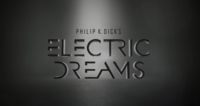Lists


2 Books
My Fav Books
Sort by:
Recent Desc
More lists by Kendale Courtney

Best Anime (IMHO)
List includes: Tower of God
April 2022
0
@kendalejordencourtney93

My Favorite Movies
List includes: Into the Wild
March 2022
0
@kendalejordencourtney93

Anthology TV Shows
List includes: Electric Dreams
February 2022
0
@kendalejordencourtney93



Space TV Shows
List includes: Star Trek: Deep Space Nine, Star Trek: Enterprise, The Orville
February 2022
0
@kendalejordencourtney93

Time Travel
List includes: Future Man
February 2022
0
@kendalejordencourtney93